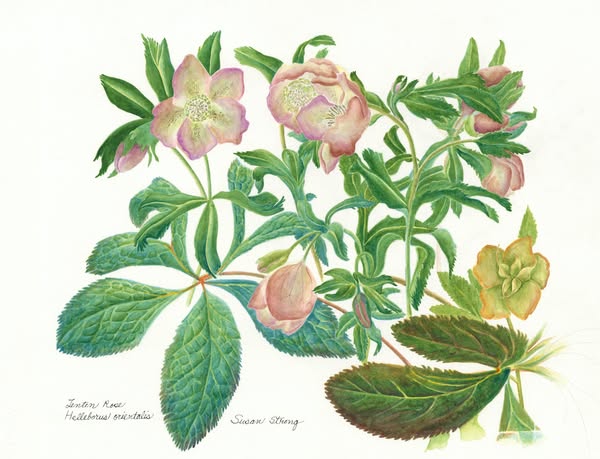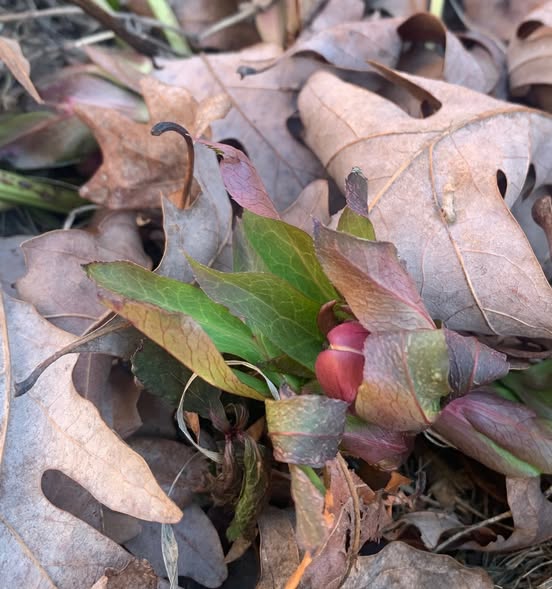Our Lenten Roses (Helleborus sp.) are now above ground and promising pink and white blooms soon. This is one of the confusingly named flowers. This flower was called a Lenten Rose because it blooms during Lent in the Christian calendar in Europe. This hellebore is not a rose, however. And it is not native to North America, but originated in western Europe. Actually, it is in the family Ranunculaceae, where the common buttercup is also located. That’s right, that little yellow flower with the shiny petals that forms clumps of yellow color in meadows.
Common flower names are often confusing and lead us in illogical directions. That’s why Linnaeus started the system with Latin nomenclature (which can also be confusing) in 1753. The system starts at the top with “Kingdom: Plantae” so we know we are not talking about animals. Then it moves to “Clade: Angiosperms” which indicates we are dealing with plants that have a fruit to protect the seed. Most of our flowering plants are Angiosperms. Next is the Order: “Ranunculales,” closely followed by the “Family:Ranunculaceae.” This refers to the family of buttercups, anemones and columbines. Finally the “Genus: Helleborus.”

This delicate looking flower is actually very tough. It is almost evergreen and pops out of the ground when the air is just above freezing. It is very tolerant of shade, so likes to survive the summer protected from the sun.
The oldest recorded Helleborus was a smelly plant. It was known in early times to be poisonous. Our hellebores share this characteristic and can cause sickness if eaten in quantity. Primarily it will cause a skin rash, especially if the leaves and seeds are handled without gloves.
What look like petals in a lenten rose are actually sepals. The sepal in most flowers wraps around the outside of the petals to protect them as they develop. Usually the sepal is tough and leathery. It often falls away from the flower as the flower opens. Not in the hellebore, though. The sepal becomes one or the most distinctive parts of the flower. The sepal creates color and reminds us of the rose.
In some lenten roses the petals don’t look like petals at all. They form small “nectaries” to protect the seeds. In some of the fancy species developed by contemporary nurseries, the nectaries have been bred more like beautiful colored petals. It gives the impression of more rose-like flowers with many bright colored petals inside the strong sepals.
During the summer the leaves change from blue green to yellow green and then to brown around the edges. The sepals persist to protect the seeds and will remain on the flower stalks until autumn, when the fuzzy seeds are mature.


